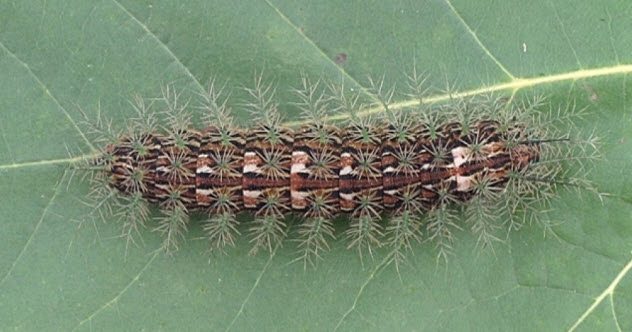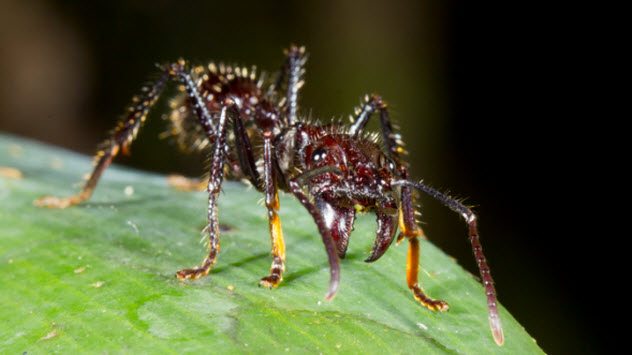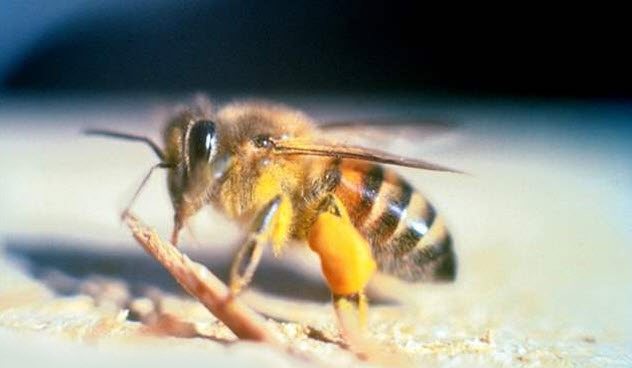 Mysteries
Mysteries  Mysteries
Mysteries  History
History 10 Surprising Stories About the Texas Rangers
 Humans
Humans 10 Philosophers Who Were Driven Mad by Their Own Theories
 Miscellaneous
Miscellaneous 10 Video-Game-Worthy Weapons and Armors from History
 Weird Stuff
Weird Stuff 10 Psychics Who Accurately Predicted Wartime Events
 The Arts
The Arts 10 Pieces of Art Inspired by a Broken Heart
 Health
Health 10 Science Fiction-Sounding New Medical Treatments
 History
History 10 Surprising Facts About the Father of Submarine Warfare
 Space
Space Ten Astonishing New Insights into Alien Worlds
 Weird Stuff
Weird Stuff 10 Bizarre Summer Solstice Rituals Still Practiced Today
 Mysteries
Mysteries Top 10 Haunting Facts About the Ghost Ship MV Alta
 History
History 10 Surprising Stories About the Texas Rangers
 Humans
Humans 10 Philosophers Who Were Driven Mad by Their Own Theories
Who's Behind Listverse?

Jamie Frater
Head Editor
Jamie founded Listverse due to an insatiable desire to share fascinating, obscure, and bizarre facts. He has been a guest speaker on numerous national radio and television stations and is a five time published author.
More About Us Miscellaneous
Miscellaneous 10 Video-Game-Worthy Weapons and Armors from History
 Weird Stuff
Weird Stuff 10 Psychics Who Accurately Predicted Wartime Events
 The Arts
The Arts 10 Pieces of Art Inspired by a Broken Heart
 Health
Health 10 Science Fiction-Sounding New Medical Treatments
 History
History 10 Surprising Facts About the Father of Submarine Warfare
 Space
Space Ten Astonishing New Insights into Alien Worlds
 Weird Stuff
Weird Stuff 10 Bizarre Summer Solstice Rituals Still Practiced Today
10 Most Terrifying Insects In The World
Many insects are cute, cuddly, and harmless. We tend to ignore them unless they annoy us by buzzing about our heads or crawling close to us. But some insects are nightmarishly terrifying and downright dangerous.
They can cause intense pain on their enemies that will last for hours or even days. Some deliver bites or stings that can even result in death. Here is a list of 10 of the most terrifying insects in the world.
10 Giant Silkworm Caterpillar

This creepy-looking caterpillar resides in South America and is responsible for several deaths each year. The giant silkworm caterpillar has tiny bristles that release a potent toxin that is poisonous when ingested. It has been called the “assassin caterpillar” or “killer caterpillar,” but it is just the larva of a giant silkworm moth (Lonomia obliqua).
The venom from this insect can cause gangrene-like symptoms throughout the body, the leakage of blood into the brain, and even death. The toxin’s strong anticlotting agents will prevent you from stopping the bleeding and ultimately cause death. There have been over 500 confirmed deaths caused by the giant silkworm caterpillar.[1]
9 Bullet Ant

The world’s most painful insect sting belongs to the bullet ant. It is also the world’s largest ant and possesses a powerful, venomous sting. A worker ant can be over 2.5 centimeters (1 in) long and looks like a wingless wasp. The queen ant is nearly the same size. These creatures have reddish-brown hair and are hairier than other related ants. Bullet ants are most likely to be found in Central and South America.[2]
The bullet ant gets its name from the shot of intense pain that it delivers. The venom-filled sting can produce agonizing effects in the recipient for up to 24 hours. According to the Schmidt Sting Pain Index, the bullet ant is rated at a Level 4—the highest level of pain. It ranks higher than the harvester ant, paper wasp, and even the tarantula hawk wasp.
8 Amazonian Giant Centipede

With a maximum length of 35 centimeters (14 in), the Amazonian giant centipede is often considered the world’s largest centipede. It is widely found in South America and the Caribbean and is also known as the Peruvian giant yellow-leg centipede. The body of this creature consists of 21 to 23 well-marked sections, each containing legs.
The Amazonian giant centipede is aggressive and nervous, and it will latch onto its enemy with all its legs during a fight. The venom that this critter carries is potent and fatal to many small animals. It is usually nonlethal to humans.
Even so, the venom causes severe pain, swelling, chills, fever, and general weakness. It could possibly be lethal to those who are allergic to the toxins.[3]
7 Tsetse Fly

Much like the mosquito, the tsetse fly sucks out your blood. But the tsetse fly does it in a much more unpleasant way. The fly has tiny serrations on its mouth that saw into your skin. These insects also transmit diseases, and some can cause an illness known as “sleeping sickness.” If a person goes without treatment, the infection is usually fatal.
Sleeping sickness symptoms start with a fever, headaches, and aching muscles. But as the illness progresses, the individual becomes very tired. The person will also experience personality changes, severe confusion, and poor coordination.
There are about two or three dozen species of the tsetse fly, and they are mostly found in Africa. This bloodsucking fly is usually 6–16 millimeters (0.2–0.6 in) long and is robust with a yellowish or brownish color.
They are mainly found in woodlands and are most active in the morning. The majority of attacks on humans are committed by the male tsetse flies. The females usually stick to feeding on larger animals.[4]
6 Human Botfly

The human botfly looks like a bee, but it has more hair and fewer bristles. They usually only attack livestock, deer, and humans. The female fly attaches her eggs to mosquitoes, other flies, and insects, which carry the eggs to the host. Body warmth causes these eggs to hatch, and then the larvae begin to penetrate the skin. These flies are usually responsible for the loss of beef in tropical America.
The larvae of human botflies cause a raised lesion in the skin that is painful, and the area usually becomes hard. Sometimes, when the patient takes a shower or covers the wound, they can feel the larvae moving.[5]
The larvae are usually removed by a simple surgical procedure that includes local anesthesia. The larvae can also be popped out by applying pressure but only in certain cases. Antibiotics are given after the procedure, and the wound will normally heal in less than two weeks.
5 Killer Bees

The killer bee (aka Africanized bee) resembles a common honeybee so much that a laboratory has to measure the bee to even tell the difference. The venom from an Africanized honeybee is no stronger than that of a regular honeybee. But the killer variety tends to attack in greater numbers, and that is why they pose such a huge threat to humans.
They have small colonies, so they can build unique nests in places like tires, crates, boxes, and empty cars. These scary bees have been known to chase people as far as 0.4 kilometers (0.25 mi) if they get excited and aggressive.[6]
Someone who is being chased by an Africanized bee should run in a zigzag pattern and seek shelter as quickly as possible. Never jump in the water to hide from them, though, because they will only wait around until you come back up for air.
4 Driver Ant

Colonies of driver ants, which can contain up to 22 million individuals, tend to move to a new spot each day. These creatures decimate any insect that gets in their way, which is why they can keep moving without ever starving. They are mostly found in Africa, and they prefer to live in forests.
Driver ants attack everything in their path, including snakes, birds, mammals, and even human beings. They use their powerful cutting jaws to attack, and they climb trees and shrubs to get a good view of their prey.
A driver ant is large and intimidating and sometimes measures over 2.5 centimeters (1 in) long. These insects don’t usually sting their prey. Instead, driver ants rip their victims apart with their mandibles. A lone ant wouldn’t be effective, but they travel in large packs and swarm their prey to viciously attack.[7]
3 Asian Giant Hornet

The largest species of hornets found in the world is the Asian giant hornet. They live throughout Eastern Asia but are most commonly found in the mountains of Japan. They are known to be extremely aggressive and fearless.
Asian giant hornets feed honeybee larvae to their young and destroy entire beehives in the process. These hornets use strong force and agility with their mandibles to kill the bees in the hive. One hornet can tear 40 honeybees in half in under a minute!
The Asian giant hornet has a 6-millimeter (0.2 in) stinger that injects venom powerful enough to dissolve human tissue.[8] In 2013, Asian giant hornets were responsible for more than 40 deaths and over 1,600 injuries after a group of attacks. They caused local government to mobilize a special medic team with trained personnel to help treat victims, and firefighters were dispatched to take care of the killer hornets.
2 Puss Caterpillar

The puss caterpillar has a unique appearance, looking much like a toupee. This small caterpillar looks cute and fun to touch, but it would be a bad decision to do so. It is currently known as the most venomous caterpillar in the United States and can cause excruciating pain.
The sting of the puss caterpillar can cause throbbing pain, burning, rash, swelling, nausea, abdominal pain, headaches, and shock. Treatment includes washing the skin with soap and water, applying cooling packs, and putting tape on the area and pulling it off to rip out any embedded hairs.
These creatures received their name from their resemblance to a house cat. They appear to be soft, but they actually have toxic spines that can stick in your skin. They have a teardrop shape and are usually yellow, gray, or reddish brown.
This caterpillar is mostly found in Florida but has been spotted as far north as New Jersey and as far west as Texas. Don’t let these cute and cuddly creatures fool you into touching their hairlike bodies.[9]
1 Maricopa Harvester Ant

The most venomous insect in the world is the Maricopa harvester ant. They contain the most toxic venom, which is made up of amino acids, peptides, and proteins. The ant attacks its prey by latching onto the victim with its pinchers and injecting the venom as many times as possible before being dislodged.
The venom is 12 times more powerful than that of a honeybee. It only takes 12 stings to a kill a rat, and it would take around 350 stings to kill a human being. That sounds like a lot of stings, but it would add up quickly if you were attacked by many of them at once.
When a Maricopa harvester ant stings its victim, it releases pheromones that signal other ants in the colony to join the attack. The pain from the sting is also measured as one of the more painful on the Schmidt Sting Pain Index, coming in at a Level 3 (just one below the highest).
The Maricopa harvester ant can cause anywhere from four to eight hours of pain after stinging its victim. They spend most of their lives in desert areas and are most commonly found in Arizona.[10]
I’m just another bearded guy trying to write my way through life. Visit me at www.MDavidScott.com./p>
For more bizarre facts about insects, check out 10 Insects That Belong in an Alien World and Top 10 Bizarre Insect Predators.








